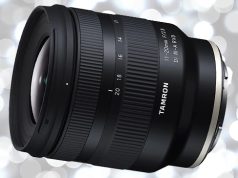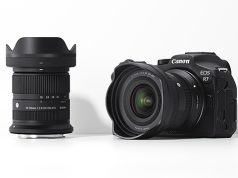Since its inception Picture Business has devoted considerable space covering the camera phone’s emergence, most recently demonstrated in May’s cover story on this burgeoning market. Speculation and trade talk in spaces like this about this constantly developing category and its potential impact on the imaging marketplace can do little to shape consumer habits.
They’ve been using their cell phones and smart phones to capture images simply because they have that capability. The camera in a phone first debuted as something of a novelty, a new option in their bundle of phone features. Since then, it’s become the most widely distributed image capture device in history. But until now few even considered camera capabilities of a phone an evaluation point when signing up for or renewing their cellular contract. Rather, it’s been an extra function they’ve found “good enough” for casual photos when their true camera is not in hand.
Such perceptions and attitudes will start changing over the next year as the co-branded Motorola and Kodak MOTOZINE ZN5 starts making its way here. Officially announced in late June, and initially available in China before a worldwide rollout, the Motorola phone also boasts the familiar Kodak logo many Americans consider synonymous with photography. That name will go a long way to legitimizing the camera phone as a true camera with consumers, the only equipment they need carry for their communications and capture needs.
And that’s a perception Kodak, with its marketing muscle, apparently will be shaping as it promotes this phone as another type of camera. In a story about the ZN5 launch in the Rochester, NY paper of record, the Democrat and Chronicle, readers saw John Blake, general manager of Kodak’s digital capture and imaging services group, quoted as stating “The average consumer will never be able to tell the difference,” between pictures taken with ZN5 and a regular digital camera. Early reviews also celebrated the performance of the ZN5 as a viable alternative to a point-and-shoot digital camera. The serviceable camera in a phone from the photographic giant, we are being led to believe, is on its way.
A Call You’ll Want to Take?
And as far as a camera goes, the ZN5 is supposed to be more than just good enough. It offers comparable performance to many point-and-shoot digital still cameras already in consumer hands. The most significant tradeoff in this first generation handset is its lack of an optical zoom lens. It has a 5 megapixel sensor, autofocus, automatic shutter speeds ranging from 1/60 to 1/1000 seconds; a multi-shot mode; 2.4-inch LCD display, digital zoom; a Xenon flash; internal memory and a microSD card slot; and in-phone software for editing, stitching or sharing images.
But it’s not this phone alone, which demands your attention. Driving its performance as a camera is the suite of tools developed by Kodak to guarantee acceptable picture quality for everyday photography from mobile handsets. In its own press release, timed to the introduction of the ZN5, Kodak formally announced the Kodak Imaging Technology for Mobile Devices, promising to “deliver an outstanding mobile imaging experience to redefine the quality, convenience and connectivity of mobile imaging devices.” Components include Kodak’s Smart Capture technology to adjust camera controls based on the photo setting, Perfect Touch technology to optimize picture quality; and Kodak EasyShare software for sharing images online or printing at home or at retail from the phone.
A New Message
For anyone who intends to be in the digital camera business, long term, this could be a turning point. It’s not so much about the message, as the messenger. Other full featured camera phones are available and Sony has already lent its CyberShot brand to Sony Ericsson camera phones. But now it’s Eastman Kodak—the company Americans of a certain age associate with capturing life’s moments—telling consumers the next generation of camera phones can replace the dedicated digital still camera.
Prior to this prevailing wisdom has held consumers would and should carry one device, their phone, for casual imaging, but bring along a “real” camera when the pictures really matter. Here’s the photo industry giant stating we’ve pushed the technology to the point where the phone can also be your primary camera…with results as good as you get from the digital still camera you’re already carrying.
Given a choice between carrying and switching between two devices, or one which does it all, what would you do?
The Primary Picture-Taking Device?
The camera phone as a primary camera will not happen overnight or in a year, but that’s clearly where these announcements and posturing are pointing. So with months to go before the Kodak branded phone arrives here, there’s a window to step back and start strategizing for the future. Other camera brands will certainly follow its early lead into the phone marketplace, the sales potential is just too big to ignore. Clearly, if you’re in the point-and-shoot camera business now, might there be camera phones in your future?
But the opportunity to reposition yourself and forge new alliances won’t remain open indefinitely. Next year we’ll start to see the early adopters explore and embrace the phone as a true camera. Price, though not yet announced, will certainly be an issue which will stem acceptance, at least at first. Regardless, if users are pleased with the experience, they’ll spread the word and camera phones might start to encroach on camera sales.
That’s in no way to suggest the dedicated digital still camera will fade from view. Technology continues to evolve on the camera side as well, and there will be rival features to entice buyers back into the camera market. Some “old school” consumers will always want a real camera, and the serious amateur and pro will continue to demand the sophistication and creative control of a digital SLR.
For legions of snap-shooters, though, the camera phone will become an increasingly attractive photo solution, equipping them with a good camera, always in hand. And as far as the younger generation goes, there’s really no issue. Many already rely on their camera phone for photography; the next wave will simply provide them with a better camera.
The Retail Approach
Retailers who promote themselves as the imaging specialist, and especially those positioned as a camera store, face a thorough assessment of these developments and how they could reshape their business. To date, few outside the large chains have established any presence in the mobile phone market. Since most handsets here are sold through the cellular providers themselves, it’s not that easy to establish a presence. But there will be no better time to explore relationships with local providers and investigating carrying unlocked camera phones compatible with local services. Get a few camera phones on the shelf.
As consumers start thinking of their phones as their cameras, as well, they’re going to want help sorting things out. You’re their help. You’ve been providing that expertise for years, and they’ll need it for their next capture device, as well. Motivation is to sell the handset so they can start consuming the service. Your role is different, your success is built by helping them to the right solution, backed with services that allows them to maximize their enjoyment of imaging. The camera phone can be your opportunity. yy





